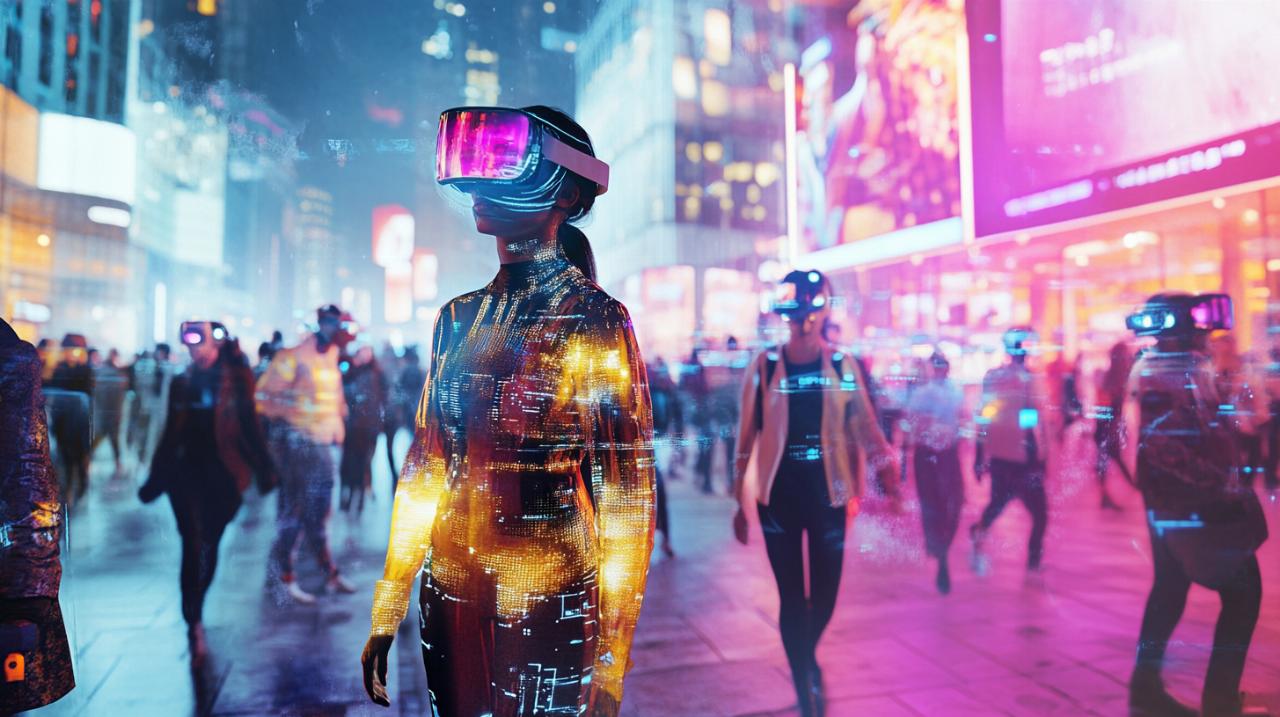The streets of London and cities across the globe are witnessing a remarkable shift in how people present themselves, with wearable technology steadily weaving its way into the fabric of everyday style. What began as a niche interest for tech enthusiasts and fitness fanatics has evolved into a mainstream phenomenon, blending innovation with aesthetics in ways that were scarcely imaginable a decade ago. From smartwatches that double as fashion statements to garments embedded with sensors, the intersection of technology and clothing is no longer a futuristic concept but a lived reality shaping urban wardrobes.
The Rise of Smart Accessories in Metropolitan Style
In the bustling heart of modern cities, smart accessories have emerged as essential components of contemporary attire. These devices are not merely functional gadgets but have transformed into symbols of a lifestyle that values both connectivity and style. The integration of wearable technology into urban fashion trends reflects a broader cultural shift towards embracing innovation without sacrificing personal expression. As platforms like callecultura.es have noted, this movement is redefining street style by merging cutting-edge tech with the aesthetic sensibilities of everyday life.
Smartwatches as Statement Pieces in the City
Smartwatches have transcended their initial role as simple timekeepers to become central elements of urban fashion. The evolution of these devices has been driven by a demand for products that offer both practicality and visual appeal. No longer confined to the realm of gadgetry, smartwatches are now designed with materials ranging from sleek metals to vibrant silicone bands, catering to diverse tastes and occasions. The market for wrist wear has experienced significant growth, with recent valuations highlighting its dominance in the wearable technology sector. This surge reflects a broader acceptance of smartwatches as legitimate fashion accessories rather than mere technological novelties.
The appeal of smartwatches lies in their ability to seamlessly integrate into daily routines while offering a suite of features that enhance convenience. From receiving notifications to tracking fitness metrics, these devices have become indispensable for individuals navigating the fast-paced rhythm of city life. Moreover, the aesthetic versatility of smartwatches allows wearers to switch between professional and casual settings with ease, making them a cornerstone of modern urban wardrobes. The collaboration between fashion houses and tech companies has further elevated the status of smartwatches, ensuring that they are as much about style as they are about substance.
Fitness trackers redefining athleisure wear
Fitness trackers have played a pivotal role in the rise of athleisure, a trend that has blurred the lines between workout gear and everyday clothing. These devices have become synonymous with an active lifestyle, encouraging wearers to monitor their health while maintaining a fashionable appearance. The integration of fitness trackers into daily wear has been facilitated by their increasingly discreet designs, which allow them to complement rather than dominate an outfit. This subtle approach has made them accessible to a wider audience, from dedicated gym-goers to individuals seeking a more health-conscious lifestyle.
The influence of fitness trackers on fashion trends extends beyond their functional capabilities. They have inspired a wave of clothing designed to accommodate and enhance the wearable technology experience. From leggings with pockets tailored to hold devices to jackets featuring integrated sensors, the athleisure movement has embraced innovation at every level. This synergy between fashion and technology has been particularly pronounced among younger demographics, who view fitness trackers as both practical tools and stylish accessories. The growing emphasis on health monitoring and personalisation has ensured that fitness trackers remain at the forefront of urban fashion trends.
The Fusion of Technology and Everyday Garments

The integration of technology into clothing represents a significant leap forward in the evolution of fashion. Smart textiles and connected garments are no longer confined to the realm of science fiction but are increasingly present in the wardrobes of style-conscious urbanites. This fusion of technology and fabric has opened up new possibilities for self-expression and functionality, challenging traditional notions of what clothing can and should do. The market for smart textiles is expected to reach substantial valuations in the coming years, underscoring the growing appetite for innovation in the fashion industry.
Connected clothing: when fashion meets functionality
Connected clothing represents a bold step towards a future where garments do more than simply cover the body. These items are embedded with sensors and processors that can monitor vital signs, adapt to environmental conditions, and even communicate with other devices. The potential applications of such technology are vast, ranging from jackets that provide haptic feedback for navigation to shirts that track breathing patterns and heart rate. This level of functionality has the potential to transform not only how we dress but also how we interact with our surroundings.
The development of connected clothing has been driven by advances in artificial intelligence and machine learning, which enable garments to learn from wearers and adapt to their preferences over time. This personalisation extends to aesthetic choices as well, with some garments capable of changing colour or pattern based on user input or environmental factors. The intersection of fashion design and technological innovation has given rise to a new generation of clothing that is as intelligent as it is stylish. However, the proliferation of connected clothing also raises important questions about data privacy and security, as these garments often collect and transmit sensitive information about the wearer.
How tech-integrated accessories are reshaping urban wardrobes
Beyond connected clothing, tech-integrated accessories have become key drivers of change in urban fashion. Items such as smart jewellery, augmented reality glasses, and even handbags with built-in chargers are reshaping how individuals approach their daily attire. These accessories offer a blend of practicality and style, enabling wearers to stay connected and informed without sacrificing their aesthetic sensibilities. The rise of such products reflects a broader trend towards multifunctionality, where every item in a wardrobe is expected to serve multiple purposes.
The impact of tech-integrated accessories is particularly evident in the realm of sustainability. Many of these products are designed with eco-friendly materials and energy-efficient technologies, addressing growing concerns about the environmental footprint of the fashion industry. Innovations such as biodegradable electronics and synthetic spider silk, which can stretch significantly beyond its original length, are paving the way for a more sustainable future. At the same time, the challenge of electronic waste remains a pressing issue, as the rapid pace of technological advancement often leads to shorter product lifecycles. Addressing these concerns will be crucial to ensuring that the fusion of technology and fashion benefits both consumers and the planet.
As wearable technology continues to evolve, its influence on urban fashion trends shows no signs of waning. The convergence of style, functionality, and innovation has created a dynamic landscape where the boundaries between clothing and technology are increasingly fluid. From smartwatches that serve as statement pieces to garments that adapt to the needs of the wearer, the future of fashion is being written in code as much as in fabric. This transformation promises to redefine not only what we wear but also how we experience the world around us, making wearable technology an integral part of the urban experience.

